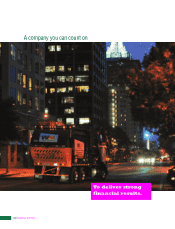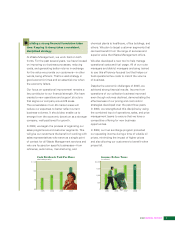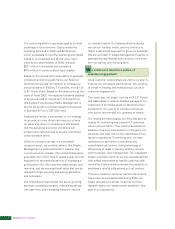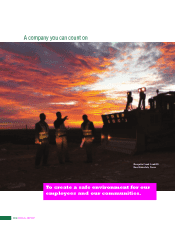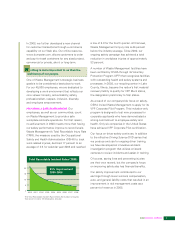Waste Management 2008 Annual Report Download - page 16
Download and view the complete annual report
Please find page 16 of the 2008 Waste Management annual report below. You can navigate through the pages in the report by either clicking on the pages listed below, or by using the keyword search tool below to find specific information within the annual report.
WASTE-TO-ENERGY. Another way that we help
conserve fossil fuels is by burning trash to create
energy. Our wholly owned subsidiary Wheelabrator
Technologies owns or operates 16 waste-to-energy
plants and five independent power production
facilities that convert 7 million tons of waste into
steam and generate up to 836 megawatts of
electricity—enough clean, renewable energy to
power nearly 900,000 homes. Another benefit of
waste-to-energy is that residue ash produced from
burning waste takes up 90 percent less space
than trash in a landfill, saving valuable airspace in
landfills. According to the U.S. Environmental
Protection Agency (EPA), the power produced
by waste-to-energy plants has less environmental
impact than almost any other source of electricity.
Wheelabrator, which celebrated its 100th
anniversary in 2008, is the second-largest
North American company in the beneficial
waste-to-energy market.
We are pursuing new opportunities in the
U.S. and also in the European market, where
waste-to-energy is used more widely than in
North America. In 2008, we partnered with
Shanks Group, a recognized leader in the
European waste sector, to bid on a number of
waste-to-energy projects in the United Kingdom.
Recently, we were selected as the preferred
vendor to build and operate a regional facility in
Maryland, the first new greenfield waste-to-energy
plant to be constructed in the U.S. in more than
a decade.
Green energy gets even greener.
At the Five Oaks Landfill in Taylorville, Illinois,
Waste Management constructed a 3.2 megawatt
power plant that provides energy to the Ameren
utility distribution lines in the community.
To maximize the benefit from the plant, we
partnered with Buckley Growers Illinois (BGI)
to provide its greenhouse with heat from the
power plant. The state-of-the-art 4-acre
production greenhouse is located adjacent to
the landfill. Waste Management delivers hot
water, a by-product of the engine generators,
to BGI to utilize as a heat source. The hot water
is channeled to an extensive network of piping
in the floor and ceiling of the greenhouse and
a support facility. The process saves fuel costs
for the greenhouse and harnesses energy that
would otherwise be unproductive.
14 2008 ANNUAL REPORT


